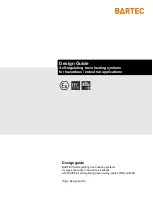
Page 16 of 20
1910308-12
8.4 Multiple pass welding
Butt Weld Joints:
When butt welding
thicker materials; you will need to prepare
the edges of the material to be joined by
grinding a bevel on the edge of one or both
pieces of the metal being joined. When this
is done, a “
V”
is created between the two
pieces of metal that will have to be welded
closed. In most cases, more than one pass
or bead will need to be laid into the joint to
close the “
V
.
”
Laying more than one bead
into the same weld joint is known as a
multiple-pass weld. The illustrations in
following figure show the sequence for
laying multiple pass beads into a single “V”
butt joint.
NOTE:
WHEN USING SELF-SHIELDING FLUX-CORE
WIRE it is very important to thoroughly chip and
brush the slag off each completed weld bead
before making another pass or the next pass
will be of poor quality.
Fillet Weld Joints.
Most fillet weld joints,
on metals of moderate to heavy thickness,
will require multiple pass welds to produce
a strong joint. The following figure will
show the sequence of laying multiple pass
beads into a T fillet joint and a lap fillet
joint.
8.5 Spot welding
There are three methods of spot welding:
Burn-Through, Punch and Fill, and Lap.
Each has advantages and disadvantages
depending on the specific application as
well as personal preference.
8.5.1. The BURN-THROUGH
METHOD welds two overlapped
pieces of metal together by burning
through the top piece and into the
bottom piece. With the burn-through
method, larger wire diameters tend to
work better than smaller diameters.
Wire diameters that tend to work best,
with the burn-through method are
0.035-inch self-shielding flux-core
wire. Do not use 0.030-inch self-
shielding flux core wires when using
the burn-through method unless the
metal is VERY thin or excessive filler





































